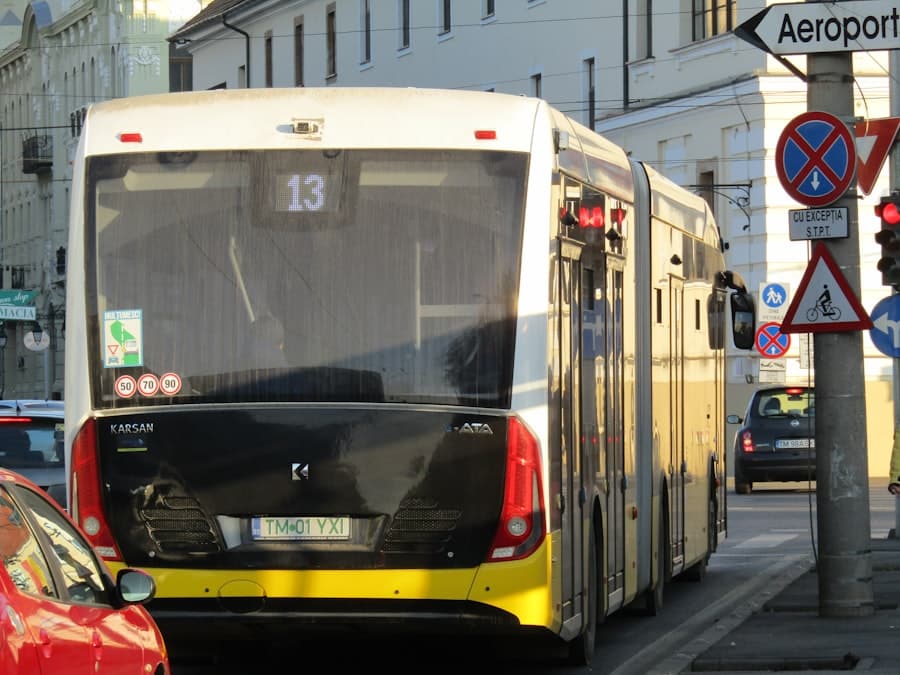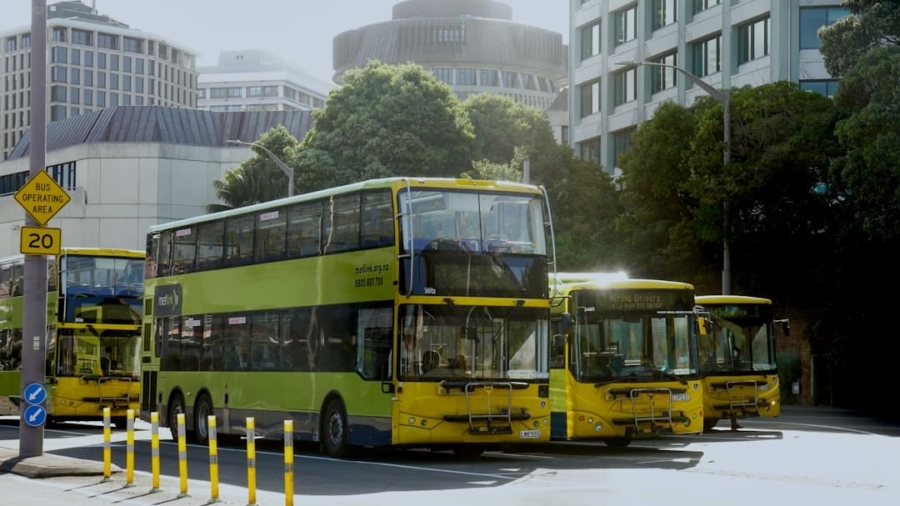The emergence of autonomous vehicles (AVs) marks a significant turning point in the evolution of transportation systems, particularly within the context of low-emission transport networks. As urban areas grapple with the challenges of congestion, pollution, and the need for sustainable mobility solutions, AVs present a promising avenue for addressing these issues. The integration of AVs into low-emission transport networks is not merely a technological advancement; it represents a paradigm shift in how we conceive urban mobility.
Cities are increasingly recognizing the potential of AVs to complement existing public transport systems, thereby enhancing accessibility and reducing reliance on fossil fuel-powered vehicles. In recent years, numerous cities around the globe have begun to pilot autonomous vehicle programs, often in conjunction with electric or hybrid technologies. For instance, cities like San Francisco and Amsterdam have initiated trials that incorporate AVs into their public transport frameworks, aiming to create seamless connections between different modes of transport.
These initiatives are not only about deploying new technologies but also about rethinking urban infrastructure to accommodate a future where AVs play a central role in low-emission transport networks. The rise of AVs is thus intertwined with broader efforts to create sustainable urban environments that prioritize clean air and reduced carbon footprints.
Key Takeaways
- Autonomous vehicles are on the rise in low-emission transport networks, offering a promising solution to reduce pollution and traffic congestion.
- Advancements in technology for autonomous vehicles, such as AI and sensor systems, are driving the development of safer and more efficient transportation options.
- The impact of autonomous vehicles on reducing emissions is significant, as they can operate on electric power and optimize routes for fuel efficiency.
- Integrating autonomous vehicles into low-emission transport networks presents both challenges, such as infrastructure updates, and opportunities, such as improved accessibility and reduced environmental impact.
- Policy and regulations play a crucial role in promoting the adoption of autonomous vehicles in low-emission transport networks, ensuring safety and sustainability standards are met.
Advancements in Technology for Autonomous Vehicles
The technological advancements driving the development of autonomous vehicles are multifaceted and encompass a range of innovations in artificial intelligence, sensor technology, and connectivity. At the heart of AV technology lies sophisticated algorithms that enable vehicles to interpret vast amounts of data from their surroundings. These algorithms are powered by machine learning techniques that allow vehicles to learn from experience, improving their decision-making capabilities over time.
For example, companies like Waymo and Tesla have invested heavily in developing neural networks that can process real-time data from cameras, LiDAR, and radar systems, enabling vehicles to navigate complex environments safely. Moreover, advancements in connectivity technologies such as Vehicle-to-Everything (V2X) communication are enhancing the capabilities of autonomous vehicles. V2X allows vehicles to communicate with each other and with infrastructure elements like traffic lights and road signs, facilitating smoother traffic flow and reducing the likelihood of accidents.
This interconnectedness is crucial for the successful deployment of AVs in low-emission transport networks, as it enables real-time data sharing that can optimize routes and reduce energy consumption. The integration of 5G technology further amplifies these capabilities by providing the high-speed data transfer necessary for instantaneous communication between vehicles and their environment.
The Impact of Autonomous Vehicles on Reducing Emissions

The potential for autonomous vehicles to contribute to emission reductions is significant, particularly when integrated into low-emission transport networks. By optimizing driving patterns and reducing instances of stop-and-go traffic, AVs can enhance fuel efficiency and lower greenhouse gas emissions. Studies have shown that autonomous driving can lead to smoother acceleration and braking patterns, which not only improves safety but also reduces energy consumption.
For instance, research conducted by the Massachusetts Institute of Technology (MIT) indicates that AVs could reduce fuel consumption by up to 20% through optimized driving behaviors. Furthermore, when combined with electric vehicle (EV) technology, the emissions reduction potential becomes even more pronounced. Electric autonomous vehicles produce zero tailpipe emissions, making them an ideal fit for low-emission transport networks.
Cities that have embraced electric AVs, such as Shenzhen in China, have reported significant improvements in air quality as a result of transitioning their public transport fleets to electric models. The synergy between AV technology and electric propulsion systems underscores the transformative potential of these innovations in achieving climate goals and fostering cleaner urban environments.
Challenges and Opportunities for Integrating Autonomous Vehicles into Low-Emission Transport Networks
While the integration of autonomous vehicles into low-emission transport networks presents numerous opportunities, it is not without its challenges. One of the primary hurdles is the need for robust infrastructure that can support AV operations. This includes not only physical infrastructure such as dedicated lanes or charging stations but also digital infrastructure capable of handling the vast amounts of data generated by AVs.
Cities must invest in smart infrastructure that can facilitate V2X communication and ensure that AVs can operate safely and efficiently within existing traffic systems. Another challenge lies in public acceptance and trust in autonomous technology. Many individuals remain skeptical about the safety and reliability of AVs, stemming from high-profile accidents involving autonomous systems.
To address these concerns, stakeholders must prioritize transparency in testing and deployment processes while actively engaging with communities to educate them about the benefits and safety measures associated with AVs. This engagement can foster a sense of ownership among residents and encourage acceptance of AVs as a viable component of low-emission transport networks.
The Role of Policy and Regulations in Promoting Autonomous Vehicles in Low-Emission Transport Networks
The successful integration of autonomous vehicles into low-emission transport networks hinges significantly on supportive policies and regulations. Governments play a crucial role in establishing frameworks that facilitate the testing and deployment of AV technologies while ensuring public safety and environmental sustainability. For instance, regulatory bodies can create pilot programs that allow companies to test AVs in controlled environments before broader deployment.
This approach not only helps identify potential issues but also builds public confidence in the technology. Moreover, policies that incentivize the adoption of electric autonomous vehicles can accelerate their integration into low-emission transport networks. Financial incentives such as tax credits for manufacturers or subsidies for consumers purchasing electric AVs can stimulate market demand and drive innovation within the sector.
Additionally, zoning regulations that promote mixed-use developments can encourage the establishment of charging infrastructure and support the seamless integration of AVs into urban landscapes.
The Potential for Autonomous Vehicles to Improve Public Transportation

Autonomous vehicles hold significant promise for enhancing public transportation systems by providing flexible, on-demand services that complement traditional transit options. By integrating AVs into existing public transport frameworks, cities can offer first-mile/last-mile solutions that bridge gaps between transit hubs and residential areas. For example, cities like Los Angeles are exploring partnerships with AV companies to deploy shuttle services that connect commuters to metro stations, thereby increasing overall ridership and reducing reliance on personal vehicles.
Additionally, AVs can help alleviate overcrowding on public transit systems by offering alternative transportation options during peak hours. By providing efficient and reliable services that adapt to real-time demand, autonomous shuttles can reduce pressure on buses and trains while maintaining high levels of service quality. This adaptability is particularly beneficial in urban areas where traditional public transport routes may not adequately serve all neighborhoods or where demand fluctuates significantly throughout the day.
The Integration of Autonomous Vehicles with Sustainable Energy Sources
The future of autonomous vehicles is closely linked to sustainable energy sources, particularly as cities strive to reduce their carbon footprints. The electrification of AVs is a critical step toward achieving this goal, as electric vehicles produce no tailpipe emissions and can be powered by renewable energy sources such as solar or wind power. By aligning the deployment of AVs with sustainable energy initiatives, cities can create a holistic approach to transportation that prioritizes environmental stewardship.
For instance, some cities are exploring the use of solar-powered charging stations for electric autonomous vehicles, allowing them to operate entirely on renewable energy. This integration not only reduces emissions but also enhances energy resilience by diversifying energy sources within urban environments. Furthermore, advancements in battery technology are enabling longer ranges for electric AVs, making them more viable for widespread adoption within low-emission transport networks.
The Future of Autonomous Vehicles in Creating Greener and More Efficient Transport Networks
Looking ahead, the future of autonomous vehicles appears promising as they become integral components of greener and more efficient transport networks. As technology continues to evolve, we can expect further enhancements in vehicle performance, safety features, and energy efficiency. The convergence of AV technology with smart city initiatives will likely lead to more interconnected transportation systems that prioritize sustainability while meeting the needs of urban populations.
Moreover, as public awareness grows regarding climate change and environmental issues, there will be increased demand for innovative solutions that address these challenges. Autonomous vehicles offer a unique opportunity to reshape urban mobility by providing cleaner alternatives to traditional transportation methods. By fostering collaboration among stakeholders—including government agencies, private companies, and community organizations—cities can harness the full potential of AVs to create sustainable transport networks that benefit both residents and the environment alike.
In conclusion, the rise of autonomous vehicles within low-emission transport networks represents a transformative shift in urban mobility paradigms. With advancements in technology paving the way for safer and more efficient operations, coupled with supportive policies and community engagement efforts, AVs are poised to play a pivotal role in shaping greener cities for future generations.
In a recent article on enicomp.com, Tesla refutes Elon Musk’s timeline on full self-driving technology, which is directly related to the future of autonomous vehicles in low-emission transport networks. Musk’s ambitious timeline for achieving full self-driving capabilities has sparked debate within the industry, with some experts questioning the feasibility of such rapid progress. To learn more about the challenges and advancements in autonomous vehicle technology, check out the article

